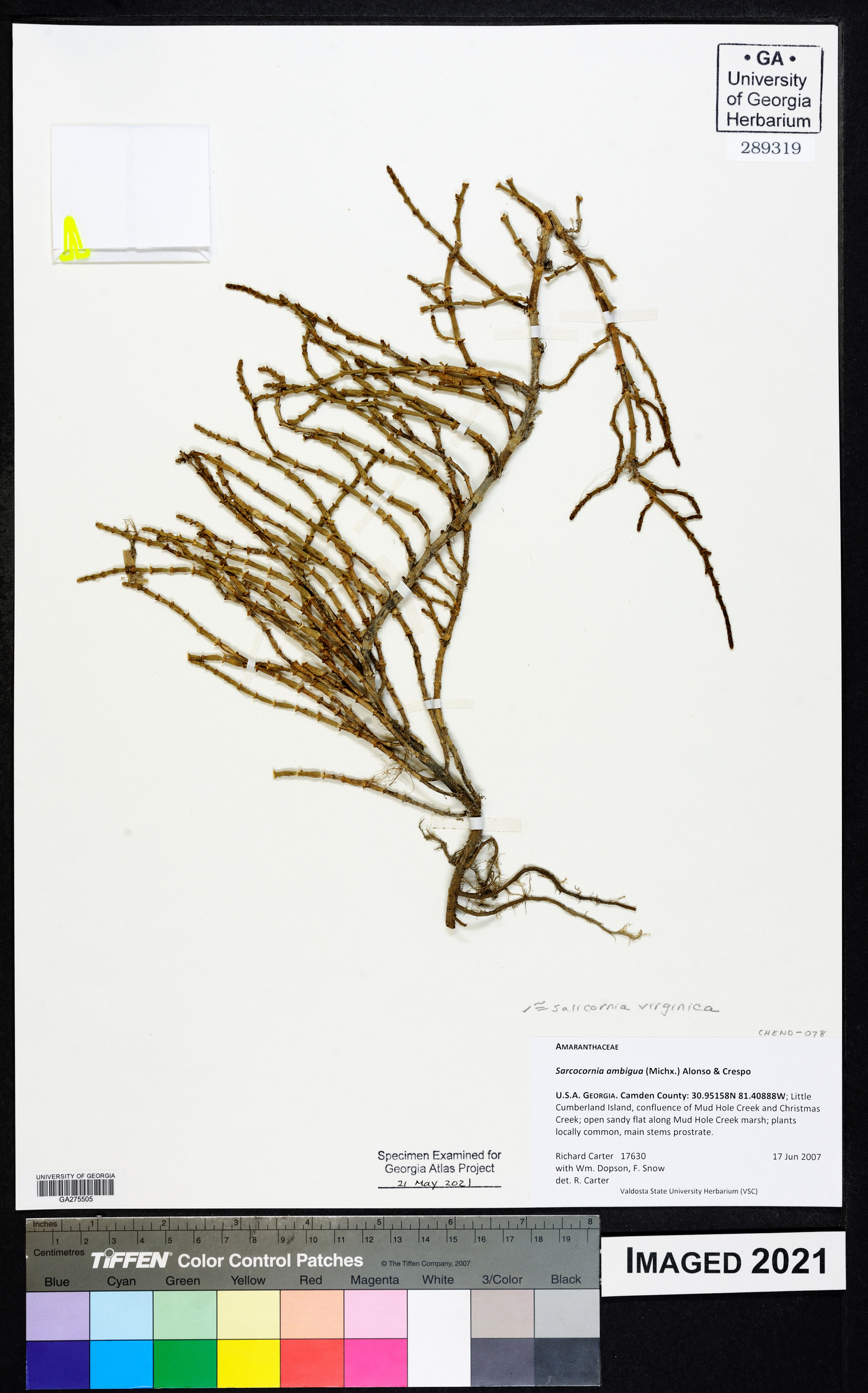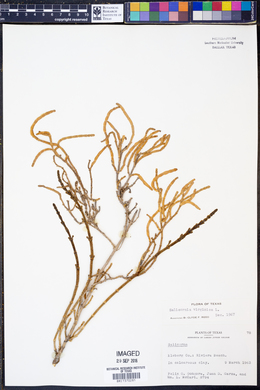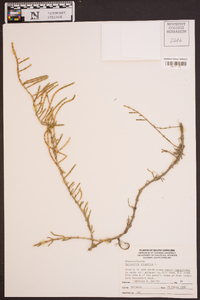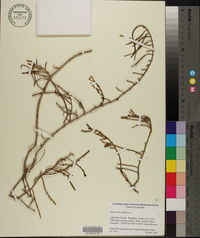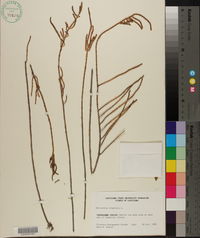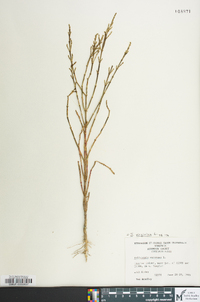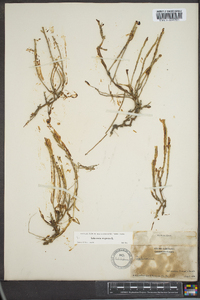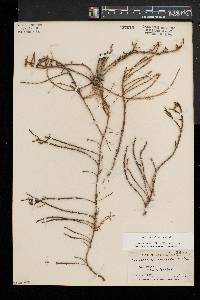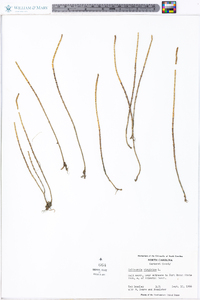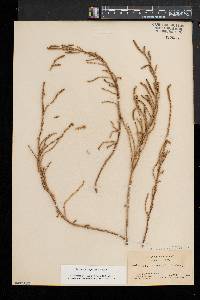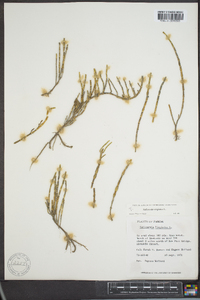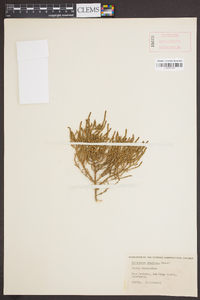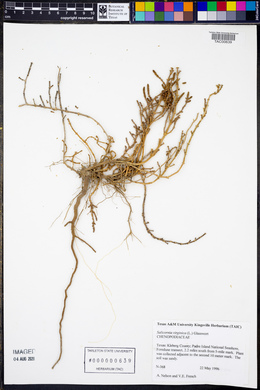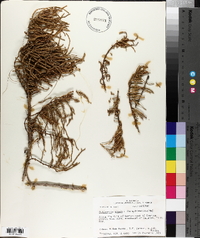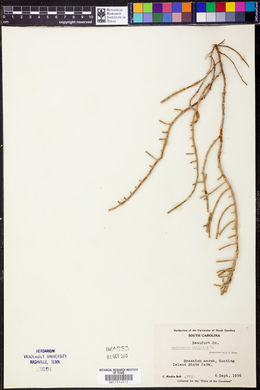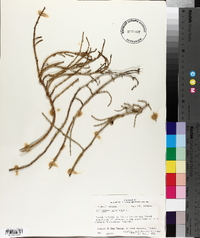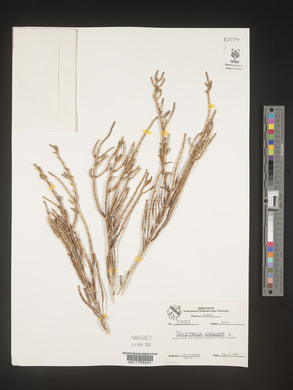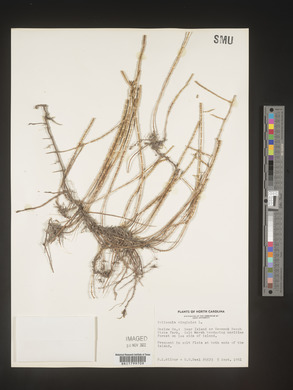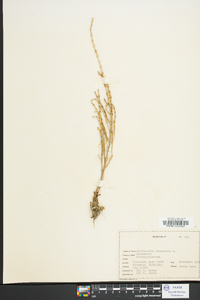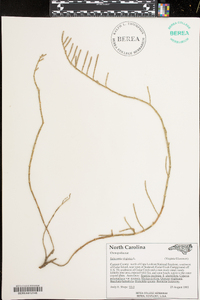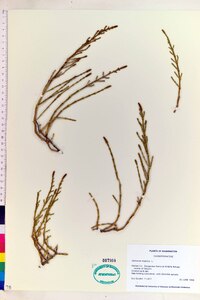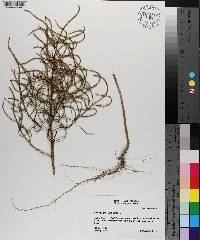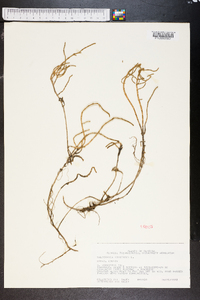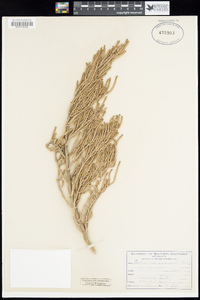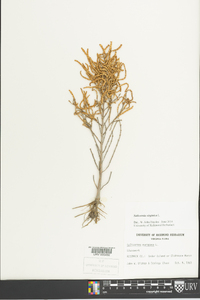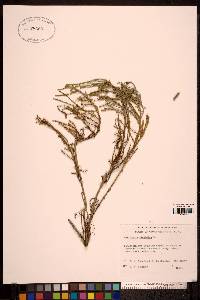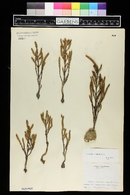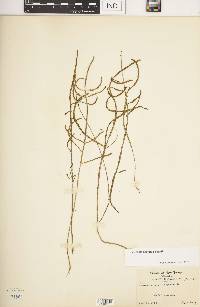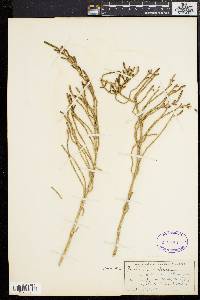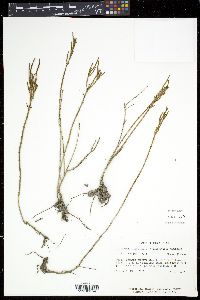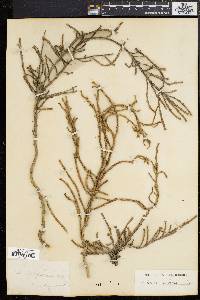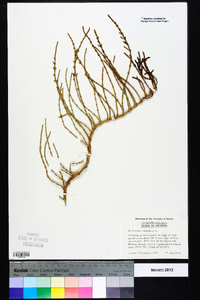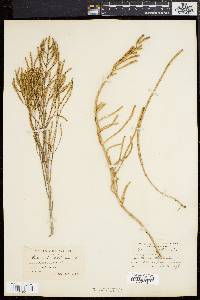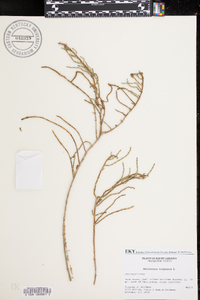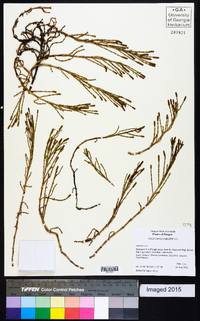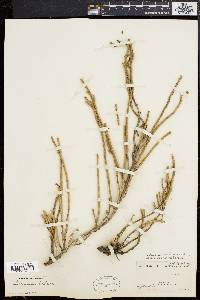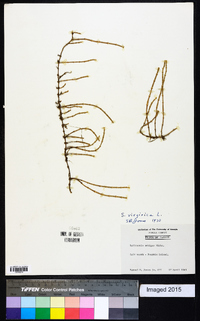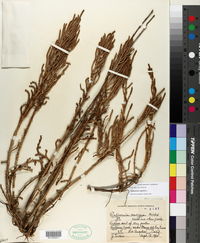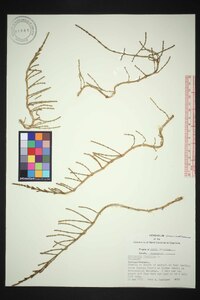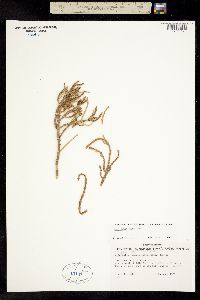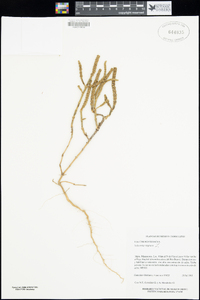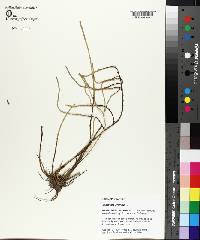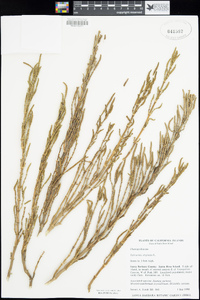
|
|
|
|
Family: Amaranthaceae
pickleweed, more...Woody Saltwort (es: salicornia)
[Salicornia depressa Standl., moreSalicornia europaea var. simplex (Pursh) Fernald] |
Stems erect, green, only occasionally developing some red or purple, usually with primary and some secondary branches, 10-70 cm, ultimate branches often long and cylindric; leaf and bract apices usually obtuse, not mucronate. Spikes cylindric, 2-8 cm, with 5-25 fertile segments; bracts covering only base of cymes. Fertile segments (2d-4th in main spikes) ± cylindric, 3.2-7.6 × 2.4-5 mm, usually longer than wide, margins 0.3-0.4 mm wide, scarious. Central flowers oval or rhombic to semicircular distally, 1.7-3.5 × 1.4-2.7 mm, usually longer than wide, usually not conspicuously larger than lateral flowers, usually not reaching distal edge of segment; anthers always exserted, 0.3-0.5 mm, dehiscing after exsertion. 2n = 36. Flowering late summer-early fall. Middle and lower levels of saltmarshes and sides of channels, rarely in saline areas inland; 0(-100) m; B.C., N.B., N.S., P.E.I., Que.; Alaska, Calif., Del., Ga., Maine, Md., Mass., N.H., N.J., N.Y., N.C., Oreg., R.I., S.C., Va., Wash. Salicornia depressa is the common and widespread species in coastal areas of North America. No detailed taxonomic investigation of the tetraploid populations has ever been undertaken in North America. It is possible that a number of different taxa exist; the Pacific Coast populations in particular seem distinct from those of the Atlantic Coast. This species has generally been called Salicornia europaea by North American authors, but that name refers to a diploid European species that does not occur in North America. The earliest name that is probably referable to this species is Salicornia virginica Linnaeus, which must be typified by specimens collected by John Clayton probably from Virginia. The specimens are sterile but clearly annual, as indicated by Linnaeus in the protologue. The name was applied to an annual species by P. C. Standley (1916), but subsequently came to be misapplied to the perennial species of the east coast now treated in Sarcocornia.
Annual herb 5 cm - 0.5 m tall Stem: prostrate to upright, unbranched to branched, fleshy when young, becoming somewhat woody with age. Leaves: reduced to tiny scales, opposite, stalkless, fused at the base, fleshy. Inflorescence: a terminal, jointed spike of flowers, 0.5 - 5 cm long, with five to ten fertile segments. Flowers: grouped in three's, arranged in a triangle, sunken into the joints, small, broadly reverse egg-shaped. Central flower usually longer than wide and larger than lateral flowers. Stamens one or two. Styles two. Fruit: one-seeded (utricle-like), enclosed in the persistent sepals. Seed vertical, yellowish brown, 1.3 - 2 mm long, ellipsoidal, with a hairy and membranous coating. Similar species: No information at this time. Flowering: August to October Habitat and ecology: Known only from a single specimen collected in 1948 along the Little Calumet River in Cook County, Illinois. There it was found growing in soil that was contaminated with industrial discharge. Typical found in salt marshes and saline soil in other parts of its range. Occurence in the Chicago region: non-native Etymology: Salicornia comes from the Greek words sal, meaning salt, and cornus, meaning horn, in reference to the horn-like branches. Depressa means depressed, flattened, or sunken. Author: The Morton Arboretum Rhizomatous perennial; main stems hard or woody, prostrate, rooting, forming mats and emitting erect or ascending flowering stems 1-3 dm; spikes 1-4 cm נ2.5-3 mm, the joints 2.5-3 mm; central fl cuneate-obovate, truncate across the top, scarcely surpassing the obliquely ovate lateral ones; seeds 0.7-1 mm. Salt marshes; Mass. to Tex.; Alas. to Calif., W.I., Europe, and n. Afr. (S. ambigua; Sarcocornia perennis) Gleason, Henry A. & Cronquist, Arthur J. 1991. Manual of vascular plants of northeastern United States and adjacent Canada. lxxv + 910 pp. ©The New York Botanical Garden. All rights reserved. Used by permission. |

